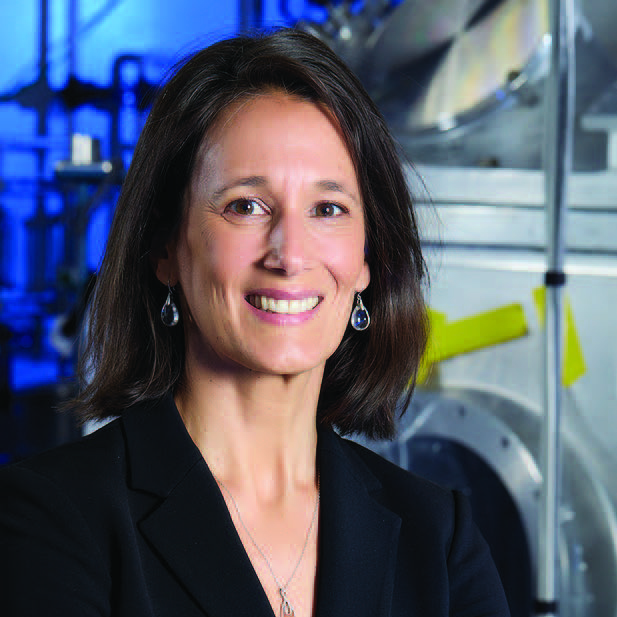Félicie Albert
Lawrence Livermore National Laboratory, USAFor pioneering research on the development and applications of x-ray sources driven by laser-wakefield acceleration and leadership in the LaserNetUS initiative.

Félicie Albert wasn’t always interested in optics. As a child, she wanted to be an astronaut or an orthopedic surgeon. Her parents had a big astronomy book, “Encyclopedia Universalis,” which contained beautiful images from the Voyager probes, and she read books by French-Canadian astrophysicist Hubert Reeves and French astrophysicists Jean Pierre Luminet and André Brahic. Félicie also attended astronomy summer camps and had her own telescope. A diagnosis of congenital hip dysplasia required several surgeries when she was very young. She remembers vividly her experiences with the surgeons, whose jobs she found interesting, and pictured herself doing the same one day.
However, it was her interest in astronomy that brought her to optics. She had an opportunity to participate in an exchange program between her school in France and one in the US. She chose to attend the University of Central Florida/CREOL for one year due to its proximity to an upcoming space shuttle launch. There, she met Craig Siders (another 2023 Optica Fellow), who inspired an interest in building lasers, and he would later offer her a postdoc position in his group at the Lawrence Livermore National Laboratory (LLNL) in the National Ignition Facility. That offer was supposed to be for two years but has turned into 15 wonderful years of science and collaboration.
Since her time in school, a significant shift in her perspective has been from “I” to “We.” Like many careers, the early steps are more self-focused: how will I make my mark in my field? What do I want to do? For Félicie, these were similar concerns as an early career researcher. As she has grown and developed, she strives to help others in their careers. She recently started in a new role at LLNL as Director of the Jupiter Laser Facility (JLF), and she’s learning many new things. She says, “We have a great team, and seeing the breadth of users come through and do successful experiments is amazing. I also enjoy interacting with the community through conferences, meetings, and collaborations with other facilities like JLF.”
Her work is primarily in laser Wakefield acceleration (LWFA), and right now, a big challenge is taking this cutting-edge science and bringing it into real-life applications. Félicie focuses on the generation of light sources, which have the potential to generate a mini synchrotron or mini XFEL. There are many opportunities for unique applications in medicine, national security, and high energy density science; the trick is making it all translate.
“High-power and ultrafast lasers are having a moment,” says Félicie. With two recent Nobel Prize wins in the field (2018 and 2023) and the December 2022 achievement by the National Ignition Facility of Fusion for the first time in a laboratory, it is clearly true! Félicie is pleased to see her area getting this attention and observes that many young scientists are gravitating to the area.
She advises those just starting their careers, “Don’t be afraid of failure, and don’t let it make you think you are a failure.” She shares that everyone has failed multiple times, and the key is to use the lessons you learn and the feedback you get to improve and bounce back. She also encourages scientists not to underestimate the power of solid science communication. Her secret? Practice! This critical skill isn’t necessarily taught in school, but honing it has served Félicie well throughout her career.
When she isn’t working, Félicie strives to reset her mind with exercise and time with family. Since childhood, she’s been very active, enjoying outdoor sports like skiing, biking, swimming, and running. She actually met her husband taking scuba diving lessons! Félicie shares that finding balance between work and family time isn’t always easy, but taking time away is imperative, and makes her a better scientist.
Photo Credit: Garry McLeod at LLNL
Profile written by Samantha Hornback
